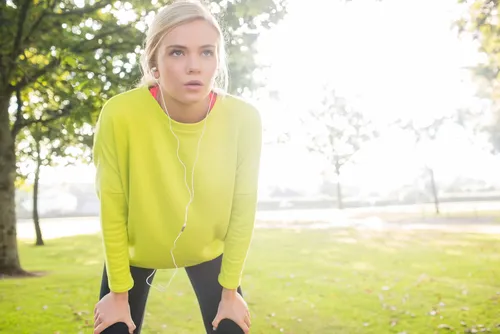If you have cough, wheeze and have a tight chest or shortness of breath within five to 20 minutes after exercise, you may have exercise induced bronchoconstriction, a.k.a exercise induced (EI) asthma. This happens with transient narrowing of the lower lung airways that occurs after vigorous exercise in patients with / without asthma. People with “allergies” to pollen and other environmental allergens may also have trouble breathing during exercise (exercise induced asthma). Triggers EI asthma usually is noticed in both low temperatures and dry air. Air is usually humidified and warmed by the nose, but during demanding activity people breathe more through their mouths. This allows cold, dry air to reach your lower airways and your lungs without passing through your nose, triggering asthma symptoms. High pollen levels, air pollutants, and viral respiratory infections may also be triggers. Diagnosis and Treatment With proper diagnosis and treatment, many people with EI asthma can participate and excel in almost any sport or activity. Your primary care doctor or your allergist with obtain your health history and do a breathing test (called spirometry) at rest. A treatment plan will be developed for you which will consist of identifying triggers as well as treating you with inhalers. In addition to medications, following tips are helpful.
- Warm-up and cool-down exercises may prevent or lessen EI asthma symptoms.
- Limit exercise when you have a viral infection.
- Limit exercise when temperatures are low.
- Limit exercise when pollen and air pollution levels are high.
- Some sports are better for people with EI asthma. For example, swimmers, walking, leisure biking and hiking. Team sports that need short bursts of energy, such as football and baseball, are less likely to cause symptoms. Cold weather activities such as cross-country skiing and ice hockey are more likely to cause symptoms.


